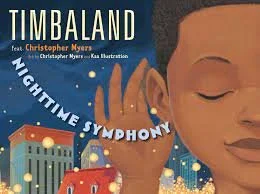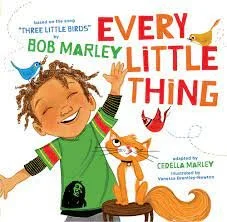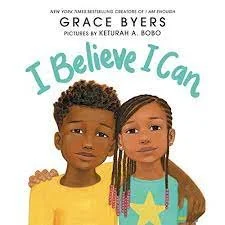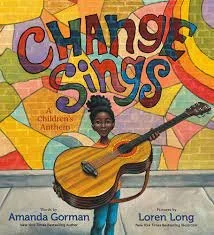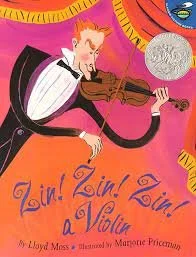Exploring Singable Books
Written by Naomi Davis, LPMT, MT-BC
Let’s talk about singable books! As a primarily school-based and early childhood therapist, singable books are one of my favorite tools to use in sessions. As a student, books were not a tool that I used very often and so as a new professional, I frequently struggled to select books and to use them effectively. Today, I want to share just a couple of reasons why using singable books in music therapy can be so beneficial and to share a few of my favorites and some ways to use them!
So why singable books?
There are so many multi-faceted reasons to use singable books but some of the main reasons that I use them is they provide a wonderful template for reinforcing literacy development. Repetitive songs alongside the visual reinforcement of the words on the page provide a multi-modal approach to literacy development. I love the multi-modal approach to learning and singable books have become one of the main ways that I incorporate this into my work. Another reason that I love singable books, is they provide wonderfully engaging sensory information. I’m a big fan of visuals in general and so I love the way that singable books can provide visual, tactile, and auditory sensory information and can increase engagement when appropriate. In virtual music therapy settings, singable books that I scan into PDFs, have often created a way to share materials with therapy participants and students even when they don’t have access to instruments in their physical space.
Some of My Favorites
Bee-Bim-Bop by Linda Sue Park
This book is a hit every time! This book follows a child as they work with their mother to make the dish Bee-Bim-Bop. They go step by step from slicing vegetables to sitting down at the table and eating the meal as a family. It features easy-to-remember rhyming couplets and at the end of each page it repeats the refrain “Time for Bee-Bim-Bop”. Although this phrase is only stated once, I will typically repeat the phrase “Bee-Bim-Bop” three times each time that it occurs.
How I use it
I’ll often use this book for sequencing and story retelling. This is a common goal area for a lot of the students I’ve worked with.
Another way I use this book is for both word identification and rhyming word recognition. This book is full of rhyming couplets and lots of words from both the Primer and Dolch sight words lists.
I am a big fan of using singable books as a jumping off point or template. One way that I use this book to do that is by singing through the book together and then using it as a template to create a personal story/song with a student. Some stories that we’ve created have included telling the steps to make a favorite meal, explaining a family tradition, or sharing the process of going grocery shopping.
Nighttime Symphony by Christopher Myers and Timbaland
This beautiful book follows a young boy as he gets ready for bed and is lulled to sleep by the sounds of the city.
How I use it
One way that I use this book is to work on choice-making. I will often co-create a loop with a client using a DAW (like Garage Band or Soundtrap) and then as we go along the book, they select sounds or instruments that represent the sounds presented in the book (like raindrops, passing cars, etc).
Another way that I use this book is to pre-create a loop or beat and use this book as a mindfulness or relaxation experience, using the words in this book as the grounding point to evoke specific imagery.
A third way that I utilize this book in sessions is as an instrument play-along and attention task. Different instruments are assigned to different sounds and the therapy participant is tasked with listening for that sound and playing the assigned instrument when it comes up in the book.
Every Little Thing by Cedella Marley
This is a book designed around the song “Three Little Birds” by Bob Marley and is adapted by his daughter Cedella Marley. This is one of my favorite board books and has so many versatile uses!
How I use it
A common goal that I see in IEPs is identifying and correctly using prepositions. The three little birds that you see in this book appear in various locations and therapy participants I’ve worked with have been tasked with tracking the birds and stating where they can be found (ie, “outside the window, over the swings, behind the bush” etc.).
This is another book with lots of rhyming couplets and to up the challenge, sometimes the rhyming words are in internal phrases and sometimes external. Singing these phrases out loud often helps the students I work with correctly identify where those rhyming words are.
This is another book I use as a jumping-off point. This book chronicles what the child depicted does in his day. When working with students who are working on identifying what happens in the morning versus the afternoon versus the evening, we’ll use this book as a template to create the story/song of their day.
I Believe I Can by Grace Byers
This lovely book by Grace Byers uses imagery to paint a picture of resilience, self-esteem, and self-confidence.
How I use it
One thing I love doing in wellness-focused groups is coming up with group or individual affirmations. I use this book as an entry point to what an affirmation is and then use the same melody as the template for an affirmations song.
Another common goal that I see on IEPs is identifying “what doing?” Essentially having the student use -ing words to identify what a person or animal is doing in a depicted image. This book has some wonderful action words and images that provide lots of opportunities to identify “what doing?”
Change Sings by Amanda Gorman
This book by Amanda Gorman was one of my top books of 2021. This book shares the message that anything is possible when we join together and follows a young girl as she gathers other children to create a band.
How I use it
I use this book a lot in adaptive lessons and music enrichment groups. This book showcases instruments in lots of different instrument families and is great for instrument identification. I may also use this as an instrument play-along in which group members have to wait for their designated instrument (or instrument family) to appear in the book in order to join in playing.
This book sparks a lot of great conversations about activism and what standing up for change can look like when you are young. I’ll typically use this as a jumping-off point in programmatic groups as we create our own “song of change”.
This is another great book for identifying both rhyming words and Dolch sight words!
Zin! Zin! Zin! A Violin by Lloyd Moss
This colorful book follows a conductor as he readies the instruments of his orchestra one by one. There are 10 instruments featured and you count up to reveal them each. Each instrument is revealed with a colorful description of the sound that it makes as well as instrument family classification.
How I use it
Most of the books that I’ve talked about in this blog I’ve used to work on literary or social-emotional goals. This book is one of my favorites to use for counting! We’re not counting very high, but it’s great for working on counting to 10 and there are multiple opportunities to count up.
I also use this one a lot in adaptive lessons. This is another great instrument family recognition book. In adaptive lessons, we may build an orchestra of our own using either Garage Band or instruments in the room. As each instrument is revealed, the therapy participant will improvise on a digital or physical instrument to match the sound that is described on the page.
This book is another great one for rhyming words! There are several internal and external rhyming pairs on each page and there are lots of challenging opportunities for locating them.
I hope this post provided you with some places to start with how to use singable books if you are struggling to come up with ideas. The list above is by no means an exhaustive list of ways to use the books mentioned, just a few of the (many) ways I do. Something I love about using books in sessions is they are so, so versatile. I’ve found so many different ways to use even a single book in up to 8 different sessions in a day which was such a huge help to me as I began building my collection on a budget.
Another tip, if you want to preview a book before you buy it there are lots of read-aloud videos available on Youtube. All of the books I mentioned above have linked read-aloud videos. Another great place to look for singable books for free or very cheap is the library. You can often borrow some great picture books from your local library and many libraries have monthly sales where you can purchase used or gently used books from their collection for very cheap.
Happy reading!
Written by Naomi Davis, LPMT, MT-BC


